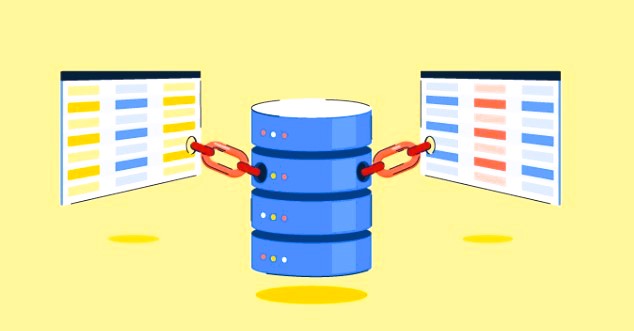“What Programming Languages Support Relational Databases?”
💡 Which Programming Language Supports Relational Databases?
In today’s data-driven world, relational databases play a central role in almost every software application — from simple websites to enterprise-level systems. But a relational database is only as powerful as the programming language that interacts with it.
If you’re wondering which programming languages support relational databases, the short answer is: Most modern programming languages do. But the way they connect, query, and manage data can vary significantly.
In this blog, we’ll explore:
- What relational databases are
- Why they need a programming language
- The top programming languages used with relational databases
- Real-world examples and tools
🗃️ A Quick Recap: What is a Relational Database?
A relational database organizes data into tables (relations) with rows and columns. These tables can be linked using primary keys and foreign keys to maintain data integrity and eliminate redundancy.
Popular Relational Database Management Systems (RDBMS):
- MySQL
- PostgreSQL
- Oracle Database
- Microsoft SQL Server
- SQLite
To interact with these databases, we use SQL (Structured Query Language) — but SQL is not a programming language in itself. You need a host programming language to integrate SQL with applications.
🔝 Top Programming Languages That Support Relational Databases
Here are the most popular and widely used programming languages that offer strong support for relational databases:
🐍 1. Python
Why it’s popular: Easy syntax, powerful libraries, great for data science and web apps.
Database tools/libraries:
sqlite3(built-in for SQLite)SQLAlchemy(ORM for multiple RDBMS)psycopg2(PostgreSQL)mysql-connector-python(MySQL)
Example:
import sqlite3
conn = sqlite3.connect("students.db")
cursor = conn.cursor()
cursor.execute("SELECT * FROM students WHERE age > 18;")
print(cursor.fetchall())☕ 2. Java
Why it’s popular: Enterprise-level stability, Android support, JDBC API.
Database tools/libraries:
- JDBC (Java Database Connectivity)
- Hibernate (ORM)
- Spring Data JPA (part of the Spring Framework)
Example (JDBC):
Connection conn = DriverManager.getConnection("jdbc:mysql://localhost:3306/school", "user", "password");
Statement stmt = conn.createStatement();
ResultSet rs = stmt.executeQuery("SELECT * FROM students");🧾 3. PHP
Why it’s popular: Widely used for web development, especially with MySQL.
Database tools/libraries:
mysqli(improved MySQL support)PDO(PHP Data Objects – works with multiple RDBMS)
Example:
$conn = new PDO("mysql:host=localhost;dbname=school", "root", "");
$result = $conn->query("SELECT * FROM students");🔷 4. C (.NET)
Why it’s popular: Strong integration with Microsoft SQL Server, enterprise development.
Database tools/libraries:
- ADO.NET
- Entity Framework (ORM)
Example (Entity Framework):
var students = context.Students.Where(s => s.Age > 18).ToList();5. JavaScript / TypeScript (Node.js)
Why it’s popular: Great for full-stack development, async capabilities.
Database tools/libraries:
node-postgres(PostgreSQL)mysql2(MySQL)Sequelize(ORM)Prisma(next-gen ORM)
Example (Node.js + MySQL):
const mysql = require("mysql2");
const connection = mysql.createConnection({host: "localhost", user: "root", database: "school"});
connection.query("SELECT * FROM students", (err, results) => {
console.log(results);
});6. Go (Golang)
Why it’s popular: Fast, efficient, great for backend systems.
Database tools/libraries:
database/sqlpackage- Drivers like
pq(PostgreSQL),go-sql-driver/mysql
Example:
db, _ := sql.Open("mysql", "user:password@/school")
rows, _ := db.Query("SELECT * FROM students")7. Ruby
Why it’s popular: Clean syntax, rapid development with Rails.
Database tools/libraries:
- ActiveRecord (Rails ORM)
pg,mysql2gems
Example:
Student.where(age: 18..25)Summary Table
| Language | Popular RDBMS Support | Common Tools | Use Case |
|---|---|---|---|
| Python | MySQL, PostgreSQL, SQLite | SQLAlchemy, psycopg2 | Data science, scripting |
| Java | All major RDBMS | JDBC, Hibernate | Enterprise systems |
| PHP | MySQL, PostgreSQL | PDO, mysqli | Web development |
| C# (.NET) | MS SQL Server, MySQL | Entity Framework | Windows, enterprise software |
| JavaScript | MySQL, PostgreSQL | Sequelize, Prisma | Full-stack apps |
| Go | MySQL, PostgreSQL | database/sql package | Backend systems |
| Ruby | MySQL, PostgreSQL | ActiveRecord | Web apps (Rails) |
🏁 Final Thoughts
Nearly every modern programming language can interact with relational databases. The best choice depends on your project type, performance needs, and developer experience.
If you’re building:
- A quick data analysis tool → Python
- An enterprise-grade system → Java or C#
- A web app → JavaScript/Node.js or Ruby on Rails
No matter what you choose, mastering how your language connects to a relational database — using SQL or ORMs — is a key skill for every modern developer.
Would you like this turned into a downloadable cheat sheet or classroom handout?
